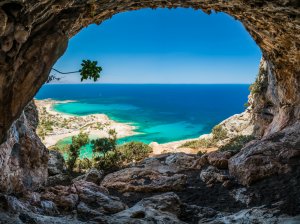You’ll soon be able to journey right into space to get up close and personal with the stars. But not all of us have that kind of cash just lying around. Despite rampant light pollution, there are still places here on earth that are great for taking a break to marvel at the night sky. Here are a few of those spots, as designated by the International Dark-Sky Association.
Aoraki/Mt. Cook National Park, New Zealand
The park, in combination with the Mackenzie Basin on the South Island, is an international dark sky reserve and has had outdoor lighting controls in place since the 1980s. With 23 peaks around 10,000 feet or higher and city lights a long way off, the reserve is a popular stargazing spot and seeks to honor the tradition role of the stars in navigation and folklore in Maori culture.
Kerry, Ireland
The Ring of Kerry makes for a fabulous drive full of natural wonders in the daytime. When night falls and the daytrippers are gone, a different but just as spectacular scene plays out overhead. It’s no wonder neolithic monuments tracking the movements of heavenly bodies dot the Iveragh Peninsula. On clear nights, visitors can see the Milky Way and Andromeda Galaxy with the naked eye.
Ramon Crater, Israel
Situated in the Negev Desert, the crater is actually a geological feature unique to Israel and the Sinai Peninsula called a makhtesh formed by erosion. The desert landscape has proved much more difficult to settle than the densely packed north of Israel, and neighboring communities have made a commitment to preserving the light conditions to promote astrotourism. Interpretive programs and stargazing tours are offered on site.
Joshua Tree National Park, California
At the confluence of the Mojave and Colorado deserts, the park is just far enough away from the bright lights of Los Angeles, Orange County and San Diego to put on an outstanding nighttime show. Each November, Joshua Tree is home to the Night Sky Festival. The event this year features an astrophotography workshop and astronomy sessions. At the Star Party on Nov. 10, astronomers will tell the stories of the sky while onlookers can see for themselves through the 20 telescopes on hand.
Elqui Valley, Chile
At the southern edge of the Atacama Desert, about 250 miles north of Santiago is the Gabriela Mistral Dark Sky Sanctuary. It was the first — the total is now four — place to be designated as a dark sky sanctuary. Several observatories line the mountainous terrain, where outside light is kept to a minimum and certain areas are at times off-limits to the public. The sanctuary not only preserves some 90,000 acres for celestial study, it is also home to several threatened and endangered species.







